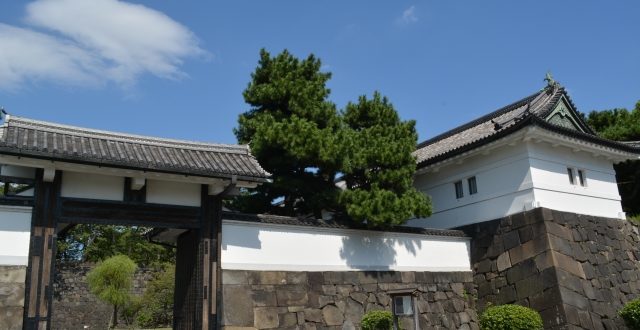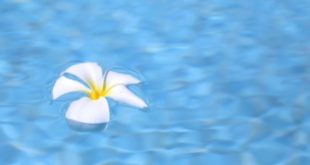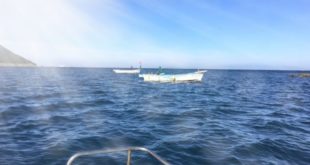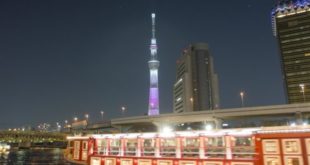The Imperial Palace is once the Edo-jo Castle, and it is an attractive tourist spot that has left many historic remains.It is an attractive place that combines historical landmarks such as Imperial Palace East Gardens, Fukiage Gardens, Kitanomaru Kōen and Kokyogaien, and many people in Japan and abroad visit each other every year.
In this article, we will introduce you to the basics of the Imperial Palace’s basic knowledge and tourism, as well as recommended tours.If you are looking for the Imperial Palace sightseeing, please refer to this article.
Contents
Basic Knowledge of the Imperial Palace
The current Imperial Palace was a place that served as the center of Japan in the Edo Castle during the fifteenth generation of Tokugawa.After Emperor Meiji moved from Kyoto Gosho to Edo-jo Castle in 1868, it was used as the Imperial Palace where the Emperor lived until now.
The Imperial Palace area can be divided into the following 4 areas.
4 areas of the Imperial Palace
- Kōkyo Higashi-gyoen
- Fukiage Gardens
- Kitanomaru Kōen
- Kokyogaien
It is important to keep the features and highlights of these 4 areas in order to enjoy the sightseeing of the Imperial Palace.Let’s take a closer look at each area.
Kōkyo Higashi-gyoen
Kōkyo Higashi-gyoen is an area where you have renovated a part of the main circle, Ninomaru, and Sannomaru of the old Edo-jo Castle.There are many attractive spots where you can feel the ruins and history of castle ruins in Edo Castle, and flowers bloom in each season in the gardens.
It is also available as a general counselor, and it is recommended for holiday spots on holidays.Admission fee is free of charge, so you can easily attend it, but please be careful as the following schedule is closed.
- Monday
- December 28 – January 3
- Event Implementation Date
Also, the opening time varies depending on the season, and the opening starts at 9 am, but there is a difference in the range from 16 to 17 in the season, so it’s better to be careful about closing time when you visit around the evening.
How to get Kōkyo Higashi-gyoen’s admission card
There are 3 types of doorways in Imperial Palace East Gardens.
- Ote-mon gate
- North Exit Hashikado
- Hirakawa Gate
There is a reception counter at each entrance, so you will have to get an admission card there.You will need to return the admission card when you leave the kindergarten, so be careful not to lose it even after you get it.
Otemon
Ote-mon Gate is a 10 minute walk from Otemachi.It was built by Masamune Date in 1620 on the front gate of the old Edo-jo Castle.
During the war, this Otemon gate was also damaged by the war, and the old Otemon gate was destroyed, but the Yagura was decorated at that time, and it is displayed on the right hand side of the current Otemon gate, and it is displayed on the right hand side.
The Otemon gate is an important tourist spot, but it is a valuable tourist spot where you can feel history, so please enjoy it while you enjoy it.
North Circular Hashikado
Kita Hashikado is a doorway close to Takeshiba Station.In the old Edo Castle, it became a castle gate close to many of the north’s Honmaru, and since it was a place connecting the important point and the outside, it was a defensive place where a moat was built up with the deepest stone walls compared to the other gates.
As the name suggests, bridges are structured to jump up, allowing people to interact with people or to escape secretly when dangerous.
Hirakawa Gate
The name of Hirakawa gate derives from the names of Kamihirakawamura and Kawakawamura, which were located around Hirakawa Gate in the Edo period. Shimodaira.
At the Imperial Palace, it is the only entrance where wooden bridge is left, and you can see a Giboshi built in the Kanei and Keicho eras.The stone walls that can be seen from wooden bridge are called Ishinohazama, and they were constructed by Takatora TODO, a busho (Japanese military commander) in the Sengoku period (period of warring states), who was regarded as a master of construction.
The Hirakawa gate was also used as a regular entrance, but it was also used as an entrance for criminals and bodies as a unclean gate.The Ako Roshi, who was famous for his the 47 Warriors, was moved from the Hirakawa Gate to the residence of Tamura, who had been in the vicinity of Shinbashi 4 chome, and committed seppuku.
The Hirakawa gate is a building that you can feel history, so please take a look at it when you enter or exit.
Fujimi Yagura
Fujimi Yagura is the only Mie Yagura that remains as the remains of Edo-jo Castle.The structure is very beautiful, and it looks like if you look from the front as you look from any angle, so it’s also famous as a “Yagura front yagura.”.
It disappeared once in the great fire of Meireki in 1657, but it was rebuilt in 1659 after 2 years.It remains unwavering at the time of the Great Kanto Earthquake, and remains as a remains to convey history to so far.
Tenshudai
The Tenshu stand where the castle tower of Edo-jo Castle was located, and only the stone walls that were the foundation of Edo-jo Castle are left now.The Tenshudai is a son of Kuroda Nagamasa, a son of Kuroda, who became famous in the Taiga drama, and was the tallest castle tower in Japan at the time when he was in charge of the construction of a 51 m tall tower.
It is now possible to climb up the stone walls, making it a tourist attraction where you can spend a lot of time thinking about history.
Peach Karaku
The Karaku Hall is a music hall built to commemorate the return of Kojun, the empress of Emperor Showa.Because the birth month of the Empress who loves music was March, it was named “Momka” because of the Momo-no-Sekku.
The roof is shaped like a petal, and the outer wall is decorated with a bird’s pattern of birds.It is a hall where you can accommodate about 200 people, and there is still a concert.
Oioku
Ooku is a place where many women lived, from his lawful wife to a and a maid in the era of Edo-jo Castle.In the heyday of the Edo period, it is said that nearly 3,000 women lived, so they can be thought of as a gorgeous space in the old times.
It is now a spacious, beautiful lawn area, and no buildings are built.There is a rest area near the toilet near the Ooku, so it’s better to take a break there.
Plum Grove Slope
Plum Grove is famous for its famous plum trees in Tokyo, and there are more than 50 plum trees planted on both sides of the slope.It’s close from Hirakawa gate, and it’s golden season from January to early January, so why don’t you try to reach this season when you visit Takebashi Station in this season, from January to early January, 3?
Rose Garden, Camellia Garden, Sakurajima Island
In Kōkyo Higashi-gyoen, you can also see seasonal flowers.You can enjoy seasonal flowers during the season, such as “Sakura Island” where more than 30 kinds of cherry blossoms bloom, and “Rose Garden” where you can enjoy over 15 kinds of roses.
Fukiage Garden
Fukiage Gyoen is a garden located on the Hanzomon side of the west side of the Imperial Palace.There are Fukiage Gosho where the Emperor and Empress live, and the Bunko Library which was used as an air defense facility during the war.
In the Edo period, the Owari Tokugawa family, the Kii Tokugawa family, and the Mito Tokugawa family also had a daimyo residence, but at present, the landscape of the Japanese garden was preserved, and the trees planted in the Edo period, which were planted in the Edo period, were naturally grown in nature.Because it has not been repaired by human hands, there is a natural nature where a natural observation event is held.
There is a nature observation meeting held in May and November every year in Fukiage Gardens, so please participate in it if you have any chance.
Kitanomaru Kōen
Kitanomaru Kōen is a forest park created in the late 1955 s, and it is a scenic spot for beautiful nature and spacious lawn, pond and trees.It was renovated in 1969 to commemorate the recalendar of Emperor Showa, and the public opening started.The Japan Budokan, Science Museum, Craft museum, National Archives and National Museum of Modern Art are also located in this Kitanomarukoen.
It is famous as a famous spot for cherry blossoms, and it is crowded with many people in spring for the purpose of cherry blossom viewing.
Kokyogaien
The Imperial Palace is surrounded by a moat, and it is called Kokyogaien around this area.The width of the road is wide, so the runners gather around the Imperial Palace every morning and enjoy running and walking.
Nijyu-bashi Bridge
There are 2 bridges called “Shomon Ishibashi” and “Shomon Iron Bridge” in the moat that goes from the front square of the Imperial Palace to the main gate and the Imperial Palace.There are 2 bridges collectively called Nijyu-bashi Bridge, but it is called Nijyu-bashi Bridge because the “Shomon Iron Bridge” is a sturdy building with a double structure.
Sakuradamon
Sakuradamon is also a place where the famous incident, Sakurada Gate, occurred.Sakuradamon is a remains of the Edo period, and this place is especially a place where you can feel familiar with history.
Wadakura Fountain Park
Wadakura Fountain Park is a beautiful park that combines water and greenery, completed in 1995.The large fountain in the park was built in 1961 to commemorate the wedding of the Emperor, and at the center of this fountain, it was built in the form of a park commemorating the marriage of Imperial Prince Tokuhito and Princess Masako’s Royal Highnesses in 1993.
There are lots of beautiful spaces in the park, such as waterfalls, murmurs, spherical fountain monuments, large fountains, and so on, and it has become a place loved by many people.
The Imperial Palace Tour
is popular among foreigners visiting Japan.
The Imperial Palace can be freely attended by individuals and procedures, but by participating in a tour with a guide, you can enjoy sightseeing while touching on the history of the Imperial Palace.
Kōkyo Higashi-gyoen Tour : Kikuyo Cultural Association
Kōkyo Higashi-gyoen is the most popular spot to attend general entrance to the Imperial Palace.There are many spots in the park where you can enjoy historical relics that can feel attractive history, and nature where you can enjoy beautiful flowers.
In Kōkyo Higashi-gyoen, the Kikuha Cultural Association is conducting a Borardia guide, and every Wednesday and Saturday, we organize a guided tour of 10:30, 13:20, and 2 times.
When you participate in a guided tour, you don’t need to make a reservation, and you don’t have to pay for it.It will take about 90 minutes, so if you want to visit Kōkyo Higashi-gyoen for the first time, please take a tour and watch it.
Fukiage Gyoen Tour
The Fukage-mien garden is also held, but you can participate in general visit from the website of the Imperial Household Agency.You can reserve up to 1 organizations, so you can use it on a group trip as well as 50.
There are 300 clerks on the day and 200 in advance, so you need to confirm the identity of the person.If possible, you will be able to participate in general visit with peace of mind if you make a reservation in advance.
For more information, please check it on the website of the Imperial Household Agency.
Fukage Gyoen General Visit
Summary
At the Imperial Palace, there are tourist attractions where you can feel familiar to history, as well as natural beauty spots that can feel green and water. It is a popular spot for many tourists.When you visit the Imperial Palace, you can enjoy sightseeing more by keeping track of the sights.Also, when visiting the Imperial Palace for the first time, I recommend you to join a tour and listen to the guide.Please enjoy your visit to Imperial Palace with reference to this article.
 toptrip
toptrip






